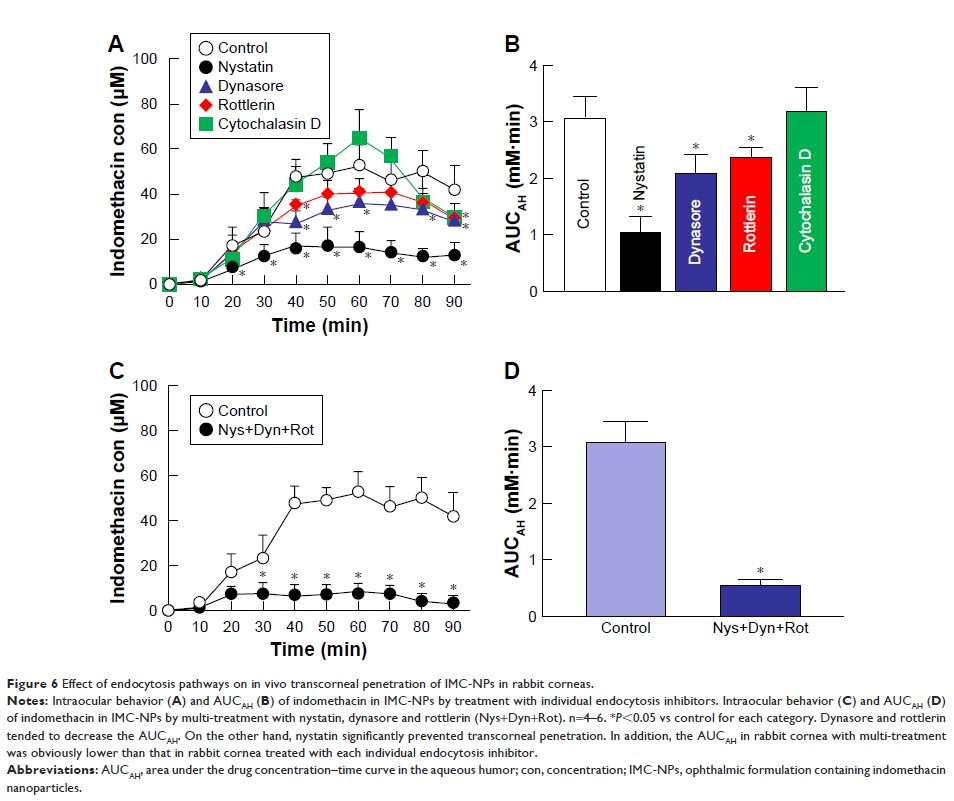9 0 5 7 8
论文已发表
注册即可获取德孚的最新动态
IF 收录期刊
- 2.6 Breast Cancer (Dove Med Press)
- 3.9 Clin Epidemiol
- 3.3 Cancer Manag Res
- 3.9 Infect Drug Resist
- 3.6 Clin Interv Aging
- 4.8 Drug Des Dev Ther
- 2.8 Int J Chronic Obstr
- 8.0 Int J Nanomed
- 2.3 Int J Women's Health
- 3.2 Neuropsych Dis Treat
- 4.0 OncoTargets Ther
- 2.2 Patient Prefer Adher
- 2.8 Ther Clin Risk Manag
- 2.7 J Pain Res
- 3.3 Diabet Metab Synd Ob
- 4.3 Psychol Res Behav Ma
- 3.4 Nat Sci Sleep
- 1.9 Pharmgenomics Pers Med
- 3.5 Risk Manag Healthc Policy
- 4.5 J Inflamm Res
- 2.3 Int J Gen Med
- 4.1 J Hepatocell Carcinoma
- 3.2 J Asthma Allergy
- 2.3 Clin Cosmet Investig Dermatol
- 3.3 J Multidiscip Healthc

Energy-dependent endocytosis is responsible for drug transcorneal penetration following the instillation of ophthalmic formulations containing indomethacin nanoparticles
Authors Nagai N, Ogata F, Otake H, Nakazawa Y, Kawasaki N
Received 1 December 2018
Accepted for publication 22 January 2019
Published 18 February 2019 Volume 2019:14 Pages 1213—1227
DOI https://doi.org/10.2147/IJN.S196681
Checked for plagiarism Yes
Review by Single-blind
Peer reviewers approved by Dr Govarthanan Muthusamy
Peer reviewer comments 2
Editor who approved publication: Dr Thomas Webster
Purpose: We previously found that ophthalmic
formulations containing nanoparticles prepared by a bead mill method lead to an
increase in bioavailability in comparison with traditional formulations
(solution type). However, the transcorneal penetration pathway for ophthalmic
formulations has not been explained yet. In this study, we investigated the
mechanism of transcorneal penetration in the application of ophthalmic
formulations containing indomethacin nanoparticles (IMC-NPs).
Materials and methods: IMC-NPs was prepared by the bead mill method. For the analysis of
energy-dependent endocytosis, corneal epithelial (HCE-T) cell monolayers and
removed rabbit cornea were thermoregulated at 4°C, where energy-dependent
endocytosis is inhibited. In addition, for the analysis of different
endocytosis pathways using pharmacological inhibitors, inhibitors of
caveolae-mediated endocytosis (54 µM nystatin), clathrin-mediated endocytosis
(40 µM dynasore), macropinocytosis (2 µM rottlerin) or phagocytosis (10 µM
cytochalasin D) were used.
Results: The
ophthalmic formulations containing 35–200 nm sized indomethacin nanoparticles
were prepared by treatment with a bead mill, and no aggregation or degradation
of indomethacin was observed in IMC-NPs. The transcorneal penetration of
indomethacin was significantly decreased by the combination of nystatin,
dynasore and rottlerin, and the decreased penetration levels were similar to
those at 4°C in HCE-T cell monolayers and rabbit cornea. In the in vivo
experiments using rabbits, dynasore and rottlerin tended to decrease the
transcorneal penetration of indomethacin (area under the drug concentration –
time curve in the aqueous humor [AUCAH]), and the AUCAH in the nystatin-treated rabbit was
significantly lower than that in non-treatment group. In addition, the AUCAH in rabbit corneas undergoing multi-treatment
was obviously lower than that in rabbit corneas treated with each individual
endocytosis inhibitor.
Conclusion: We
found that three energy-dependent endocytosis pathways (clathrin-dependent
endocytosis, caveolae-dependent endocytosis and macropinocytosis) are related
to the transcorneal penetration of indomethacin nanoparticles. In particular,
the caveolae-dependent endocytosis is strongly involved.
Keywords: drug
delivery system, bead mill, caveolae-dependent endocytosis, clathrin-dependent
endocytosis, micropinocytosis
